The biceps is a two-headed muscle. So to develop it to its full potential, you need to train both heads within your arm routine. The behind the back cable curl emphasizes the long head of the biceps, and in particular, the long head while it’s in a stretched position.
In this way, it’s the opposite of regular cable curls, which emphasize the short head because they’re typically performed with your arms slightly in front of your body.
Consider adding both variations into your training program if you want to take your bicep development to the next level.
Related: Best exercise for bicep peak
Behind the back cable curl exercise details
- Other Names: Behind body cable curl
- Main Muscles: Biceps brachii
- Secondary Muscles: Brachialis, brachioradialis, forearm flexors
- Exercise Type: Strength
- Exercise Mechanics: Isolation
- Difficulty Level: Intermediate
- Equipment Needed: Cable machine, D-handle
How to do a behind the back cable curl
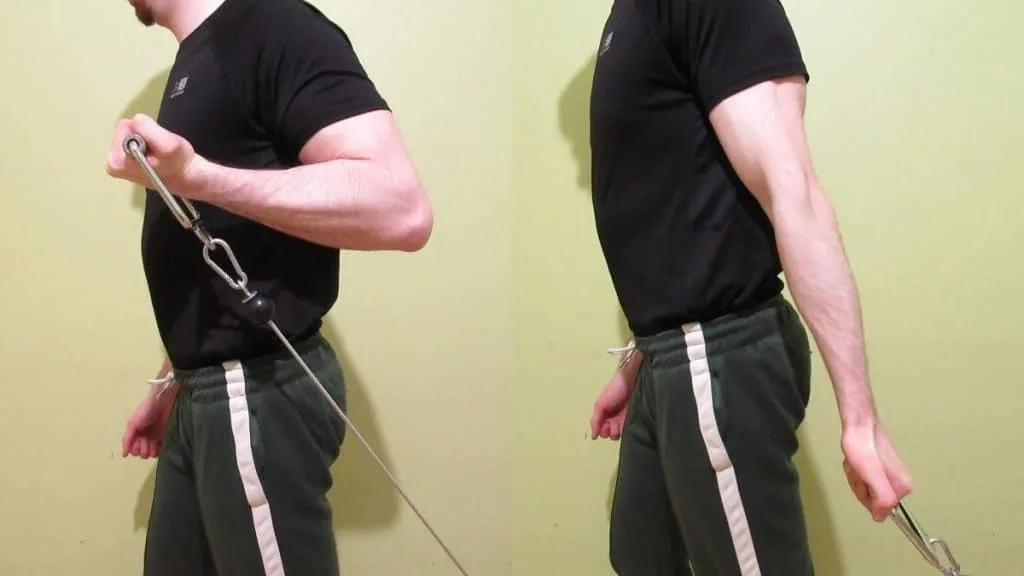
- Connect a D-handle or stirrup attachment to a low pulley.
- Grab the handle and then face away from the cable station.
- Take a step away from the machine and let your arm stretch behind your body.
- Curl the cable handle toward your shoulder by flexing your elbow.
- Squeeze your biceps and then lower the weight under control until your elbow is almost fully locked out.
- Repeat for 3-4 sets of 10-15 reps per arm.
Behind the back cable curl mistakes
The behind back cable curl is an excellent movement for the biceps because it provides your muscles with constant tension and a deep, DOMS-inducing stretch. Just make sure that you’re not making any of these common curl mistakes if you want to get the most from this exercise.
Standing too close to the machine

Cables provide constant tension because the moment that the weights are elevated off the stack, your muscles have to resistant the tension. And so it follows that the second the weights touch back down on the stack, your muscles no longer have to resist the tension.
Therefore, if you stand too close to the machine, or more specifically, to the weight stack, then you might find that you’re unable to get a proper biceps stretch during the eccentric (lowering) phase of the rep.
Instead, take a big step away from the machine so that your biceps have tension from the very first inch of movement. Just be sure not to exaggerate your stance too much in the opposite direction. If you stand too far away from the machine, then you might feel off balance because the cables will effectively be pulling you backward, a bit like metal being pulled toward a magnet.
Incorrect arm positioning
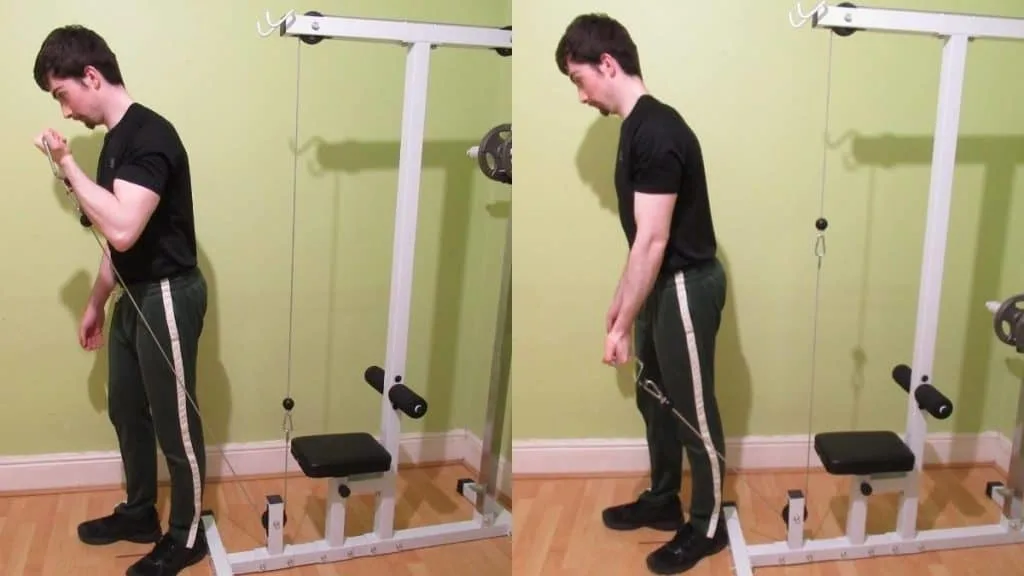
The long (outer) head of the biceps becomes more active when you position your arm behind your torso (see our guide on how to build your outer bicep for more info). And while this might seem simple enough to do in practice, it can be hard to keep an eye on your form when the lactic acid is raging through your biceps.
The trick is to not let your shoulder travel too far forward as you curl the weight. Instead, your arm should always remain behind your torso.
Note, however, that a few degrees of shoulder flexion during the concentric phase of the rep is fine and is to be expected. After all, the long head of the bicep actually assists in shoulder flexion, so it may even be beneficial to let your shoulder come up slightly as you lift the weight. Just be sure to keep the flexion moderate so that your arm stays behind your body and thus receives a full stretch.
Related exercise: Single arm cable curls
Performing partial reps
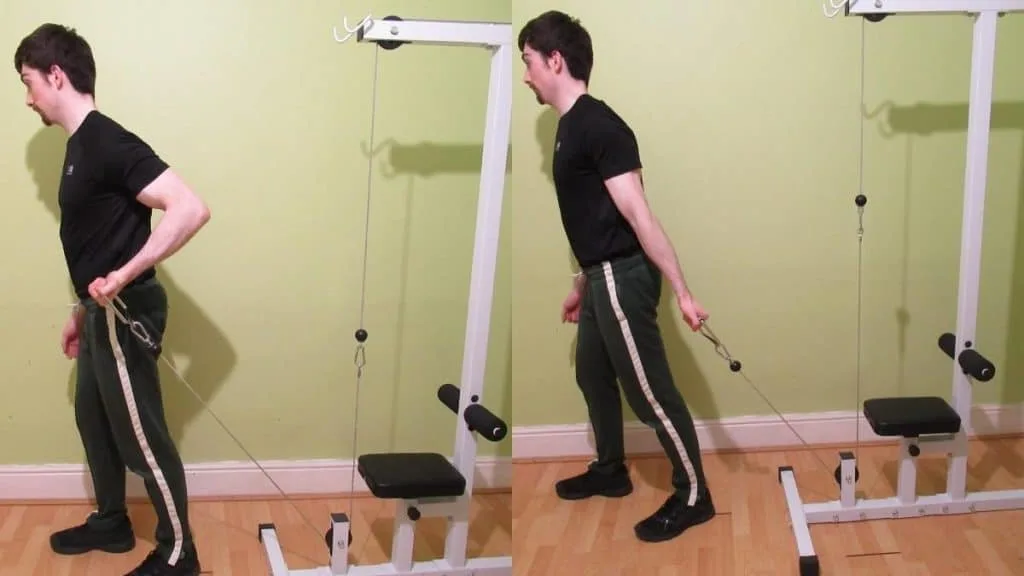
While some studies find little difference between half reps and full reps, most experts agree that partial reps lead to partial gains. [1]
So to get the full benefits of the behind-the-back cable curl, make sure to fully contract your biceps at the top of the rep. In a like manner, always lower the weight until your elbow is fully locked out. You can even flex your triceps at the end of a rep so that you know your biceps are fully lengthened.
Behind the back cable curl alternatives
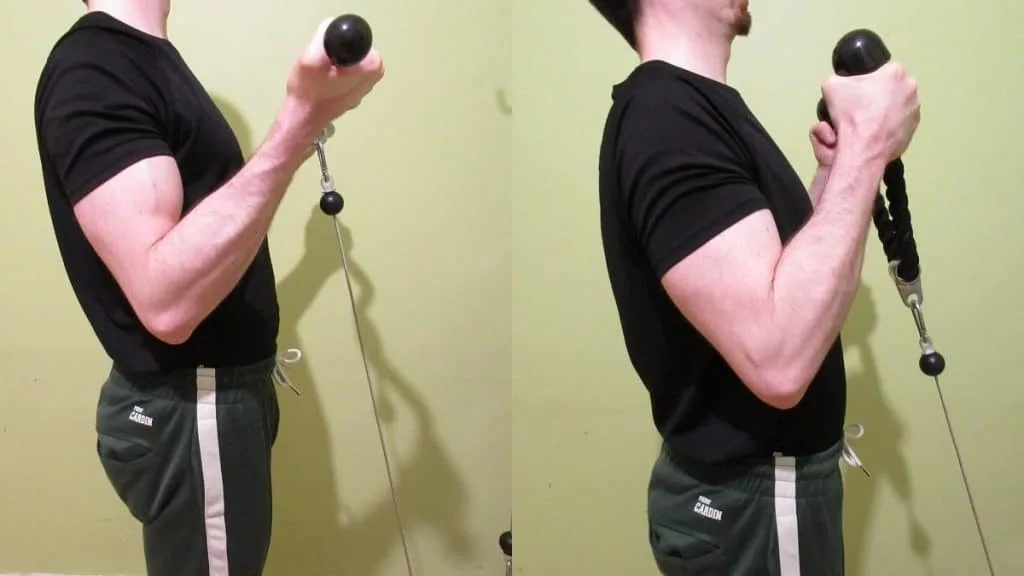
The behind the body cable curl has many muscle building benefits. Yet, by working on the other muscles in your arm, you can actually make your biceps look even better without necessarily making them bigger.
For example, cable hammer curls work the brachialis. This is an often overlooked muscle that lies beneath the biceps brachii. When it’s well-developed, it actually pushes the biceps out and makes them appear more peaked.
Hammer curls also work the brachioradialis, which is the most prominent forearm muscle when your arms are hanging by your sides. So if you want big guns even when you’re not flexing, then don’t overlook these two critical arm muscles.
To focus on the short head of your biceps and build that overall mass, also consider performing an overhead cable curl exercise during your inner bicep workout. It’s the ideal drill to pair with the behind body cable curl because it works your biceps in their fully shortened position (behind the back curls work the biceps in their fully lengthened muscle position).
Also, see our bicep cable workouts guide if you’re looking for a full routine to follow.
Conclusion: Is the behind the back curl an effective exercise?
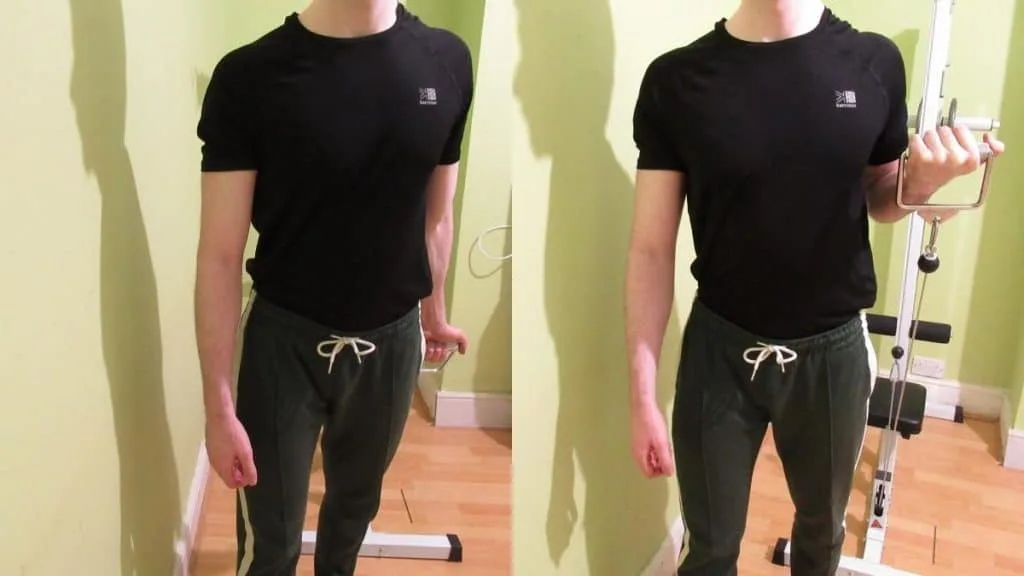
The behind the back cable curl may not be as popular as its free-weight brothers in iron, but in terms of muscle-building benefits, it’s arguably superior to barbells and dumbbells in many cases. First off, you get constant tension throughout the whole set, which, in turn, results in a more powerful muscle pump because your biceps don’t get a chance to rest. [2]
Unlike other advanced bicep exercises, the behind the back curl also emphasizes the outer head of the biceps, which is the head of the biceps that most people need to work on.
Add in the virtually unrivaled weighted stretch that you feel during the eccentric, and you can see why behind the back cable curls are one of the most effective mass-builders out there.
I recommend sticking to sets of 12-20 so that you can focus on your mind-muscle connection. But if you feel that you’ve nailed the technique, then feel free to perform sets of 6-10 reps to focus on those fast-twitch muscle fibers.
References
- Schoenfeld, B. J., & Grgic, J. (2020). Effects of range of motion on muscle development during resistance training interventions: A systematic review. SAGE Open Medicine, 8, 205031212090155. https://doi.org/10.1177/2050312120901559
- Evans, M. (2016, April 29). Why you need to use cable machines. Men’s Health. https://www.menshealth.com/uk/building-muscle/a755943/why-you-need-to-use-cable-machines/

